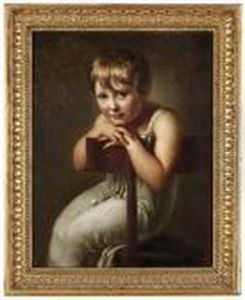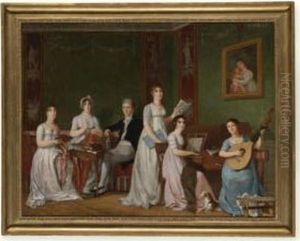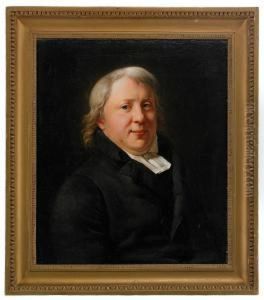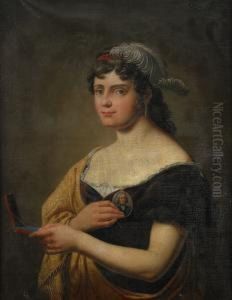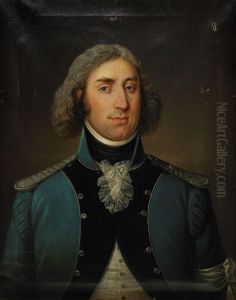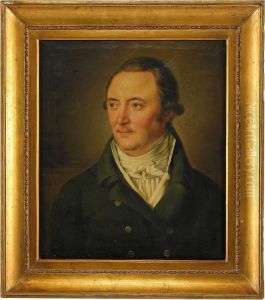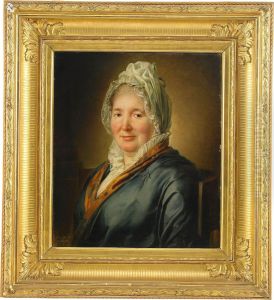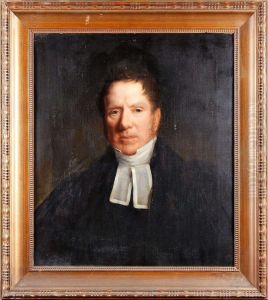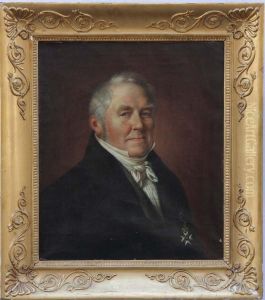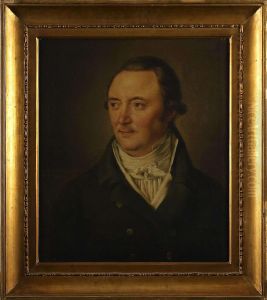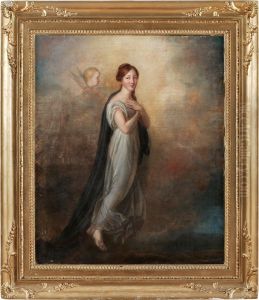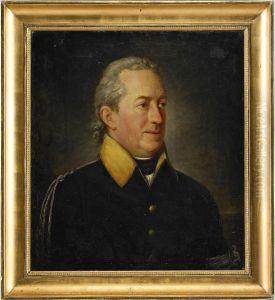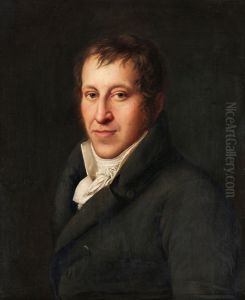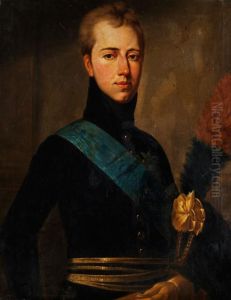Per Ii Krafft Paintings
Per Krafft the Elder was a distinguished Swedish portrait painter whose artistry flourished during the 18th century. Born in Stockholm, Sweden, in 1724, Krafft demonstrated an early predilection for the arts, prompting his initial training in his homeland before embarking on an extensive study tour across Europe, a common practice among artists of his era seeking to refine their craft and draw inspiration from the continent's rich artistic traditions.
Krafft's journey led him to significant cultural centers, including Paris and Vienna, where he was exposed to the prevailing artistic trends and techniques. These experiences were instrumental in shaping his style, which came to be characterized by a meticulous attention to detail and a profound ability to capture the essence of his subjects. His portraits are celebrated for their elegance, realism, and the skillful rendering of textures, particularly in the depiction of fabrics and skin tones.
Upon returning to Sweden, Krafft quickly established himself as one of the leading portrait painters of his time. His clientele included the Swedish royal family and the aristocracy, as well as distinguished members of the burgeoning bourgeoisie, reflecting the broad appeal of his artistry. His works not only serve as masterful examples of 18th-century portraiture but also provide insight into the cultural and social dynamics of Sweden during a period of significant transformation.
Krafft's legacy extends beyond his portraits. He played a pivotal role in the Swedish art scene of his day, contributing to the development of a national artistic identity. His influence was further solidified through his role as a teacher, passing on his techniques and aesthetic sensibilities to the next generation of Swedish artists.
Per Krafft the Elder died in 1793, leaving behind a body of work that continues to be admired for its technical excellence and its nuanced portrayal of the human condition. His contributions to Swedish art have ensured his place among the esteemed artists of the 18th century, and his portraits remain cherished for their historical significance and timeless beauty.
